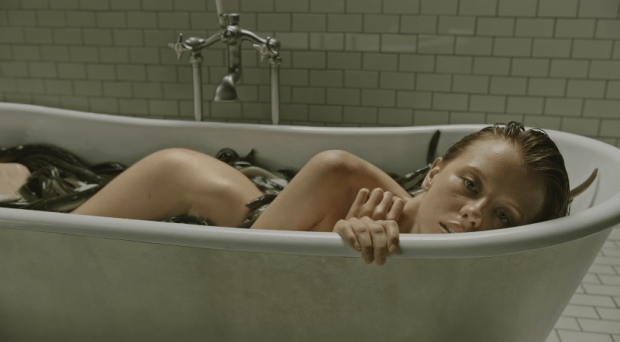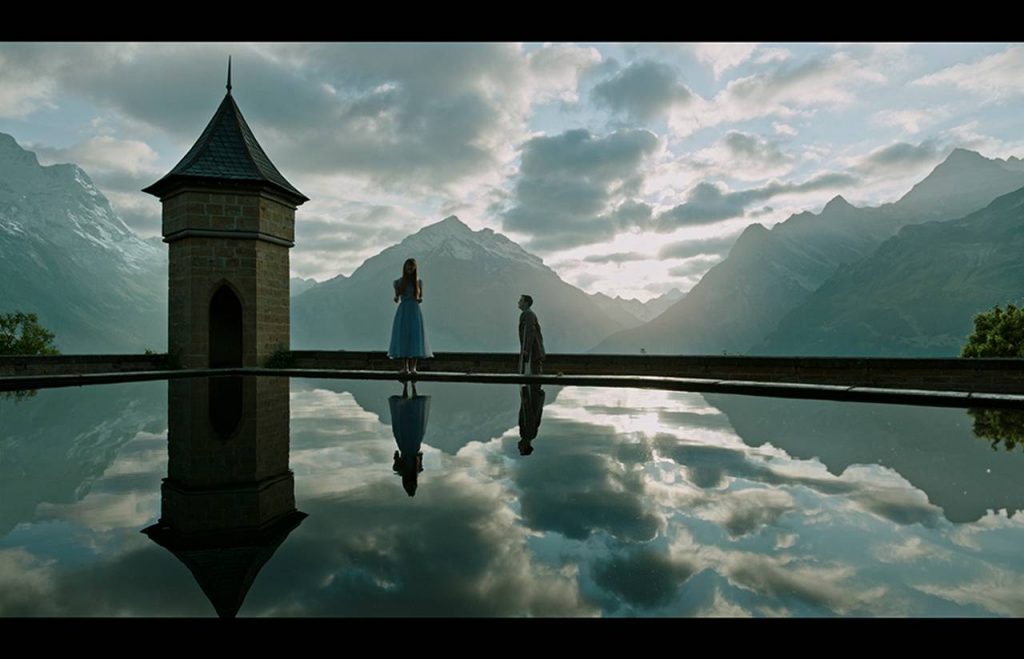


A Cure For Wellness - Review by Claire Dukes
A Cure For Wellness has been on my radar since the first trailer came out – Hollywood’s long-awaited sophisticated psycho-thriller – and I was eager to see director Gore Verbinski’s comeback to horror since his remake of The Ring.
The film fixates on self-discovery and for our protagonist Lockhart (Dane DeHaan), his journey begins as an eager junior turned exec determined to prove his worth by climbing the economic high-rise. From the get-go Lockhart exerts pretention, reminiscent of Mad Men’s young Pete Campbell, but his cooked books conveniently enable his company’s board members to blackmail him. Lockhart must now bring back the company’s CEO (Pembroke) from a Swiss wellness centre to a sign an all round benefitting merger – trouble is, Pembroke doesn’t want to leave.

Verbinski successfully combines classical horror conventions with his own contemporary and experimental stylisation, which can first be seen as Lockhart makes his way up to the Castle-like clinic. Against the backdrop of the Swiss Alps the castle is abundantly oppressive as a typically located eyrie, and it is at this point when Lockhart is removed from contemporary society and placed into isolation that I immediately think: Bram Stocker’s Dracula meets twisted fairytale fantasy.
A more idyllic and charming rendition of Shutter Island’s Ashecliffe at first, it doesn’t take long for this Swiss spa to do a number on Lockhart with the assistance from submissive staff and their illusive answers as to the whereabouts of Pembroke. Deciding to return to New York, retrieving Pembroke seemed like Lockhart’s only issue until alarming hallucinations start to take effect after consuming the local water (part of the treatment). From bad to worse, his predicament then escalates resulting in a car crash. Lockhart lands himself right back in the clinic with a broken leg whereby a power shift occurs and his role is switched from guest to patient.
After meeting the dubious clinic director Volmer (Jason Isaacs), Lockhart is persuaded to take “the cure”. Still equipped with his hotshot attitude and not a lot else to do, he takes it upon himself to discover what the cure really is. While hobbling on crutches around the nothing-is-what-it-seems facility he encounters; the “very special case” Hannah (Mia Goth); folktales; inhospitable villagers; an aquifer turned evil layer; and eels, lots and lots of eels (red herrings, if you will).

While Verbinski’s cinematic style is relentless and overflowing with visual metaphors – on an aesthetic level this is well executed – patience and perseverance are key, as answers and plot twists are provided in titbit fashion. At just around two and a half hours long, I couldn’t help but contemplate whether or not Verbinski had exhausted the latter element in exchange for a plot holed narrative, which we trust to eventually provide the film’s underlying message.
Fortunately, most inadequacies can be somewhat side-stepped or salvaged by the atmospheric soundtrack. A cross between Stranger Things and A Secret Garden, Benjamin Wallfisch’s ominous score successfully reinforces the film’s apt for nihilistic mystery and dream-like states.
The only other real mystery, also revealed at the end, is the certificate rating 18. A self-confessed scaredy-cat I was rather hesitant about going in alone, but turns out the real horror is less frightening and more… disturbing. Quickly spiraling down, A Cure For Wellness takes a peak turn, which at this stage I fear screenplay writer Justin Haythe has got too many ends to tie together.
Eventually it becomes apparent that Lockhart wasn’t really destined for his new found position, given that he was only bumped up because his predecessor mysteriously clocked off. So, it seems fitting that what we have left in Verbinski’s fairytale finale is a depiction of humans stripped of their success, which in turn reveals their haunting emptiness, and Lockhart amidst some sort of eel-infused trip gazing upon the Alps.


